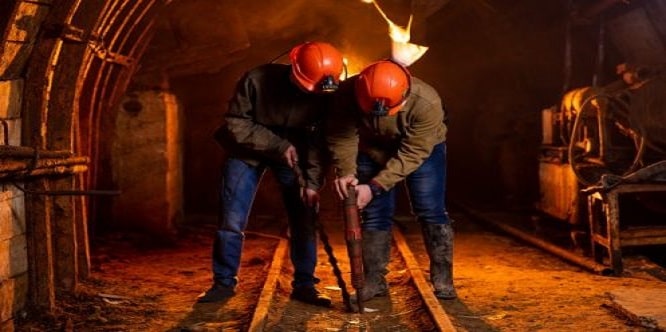TAKEAWAY: Employees in the mining industry face many risks and hazards every day on the job. Here are some tips for preventing musculoskeletal injuries in the mining industry.
Jump Ahead
Fitness-to-Work Testing FAQs
SureHire’s Fitness-to-work (FTW) evaluations help employers understand an individual’s overall health status and provide recommendations for work accommodations and/or restrictions when necessary. Should an incident occur, employers can also use the information provided through our FTW when applying for cost relief through their province’s worker’s compensation board.
Check out this frequently asked questions video and contact us today to request a quote.
The mining industry is a risky business. Labeled as one of the most dangerous and deadliest industries in Canada, it carries the burden of a relatively significant threat for workplace accidents and injuries. The labor-intensive nature of the mining industry produces an increased incidence of work-related musculoskeletal disorders. With this in mind, it’s also important to recognize that there are several steps employers can take to mitigate the risks associated with musculoskeletal disorders and keep their workforce safe. [Learn a bit more about reducing risk in safety-sensitive workplaces here].
The most common musculoskeletal injuries in the mining industry
The prevalence of musculoskeletal disorders in miners is relatively high. A systematic review and meta-analysis of musculoskeletal injuries in miners showed that the upper back is the area of the body with the highest injury prevalence. The lower back is another commonly affected area, followed by the neck, shoulders, hands, and fingers.
Some of the general and specific musculoskeletal injuries that miners are at risk for include:
- Muscle or tendon sprain in the back, neck or shoulders
- Herniated disc or disc degeneration in the back
- Ligament strain in one of the commonly affected areas mentioned above
- Nerve and blood vessel compression, for example, in the case of thoracic outlet syndrome
- Musculoskeletal injuries affecting the forearms, wrists, hands or fingers, such as carpal tunnel syndrome, radial tunnel syndrome, or trigger finger/trigger thumb
- General discomfort, tension, or muscle pain in one of the commonly affected areas above
A data analysis of musculoskeletal injuries in the mining industry showed that, at 26.4% of the total reported injuries, strains and sprains comprised the majority of workplace musculoskeletal injuries.
The most common causes of musculoskeletal injuries in the mining industry
The incidence of musculoskeletal injuries in the mining industry is especially high in the underground and surface coal, surface stone, and stone processing plants. The main mining activities associated with musculoskeletal injuries include:
Handling supplies or materials
This includes loading and unloading objects that may be heavy and require significant exertion from the lifter. Supplies and materials may also be awkward to handle and subsequently produce a jarring action. Consequently, the risk of back or shoulder injury can be high for these types of activities.
Walking or running
Overexertion while walking or running can result in musculoskeletal injuries, especially to the back, knees and ankles. There is also a risk of falling or tripping, particularly on hazardous surfaces.
Getting on or off equipment and machines
In these situations, problems with accessing equipment can result in a fall and a subsequent muscle or joint injury. There is also a risk of injury from surface impact itself, such as jumping down from a machine. Uneven or slippery surfaces can also pose an increased risk of injury.
Machine maintenance and repair
Sometimes the most routine tasks can produce a significant risk for health and safety, and specifically, for musculoskeletal conditions. A wet or cluttered surface presents a hazard, as does inadequate lighting. Other neglected aspects of ergonomics such as confined working spaces are also a common problem. Maintenance and repair work can involve similar risks to handling supplies and materials, including awkward postures and heavy lifting.
Although they’re designed to protect mine workers from dangerous areas or equipment, machine guards are responsible for a high number of injuries in this industry. This is because significant physical exertion is required to move them to carry out maintenance activities.
Using hand tools
Hand tools have the potential to cause vibration-related or overuse injuries/repetitive strain injuries when they are used repetitively over time.
Tips for preventing musculoskeletal injuries in the mining industry
The most prevalent accident types in each activity area were overexertion, falling, and being struck. Overexertion accounted for the majority of injuries in every activity. Already, this highlights a priority area for employers to focus on, since overexertion injuries can, to a large extent, be avoided.
Many of the risks for musculoskeletal injuries in the mining sector can be mitigated. Employers can take actions in the following areas.
Establish a solid workplace health and safety policy
Although mining itself carries a relatively high degree of risk, this risk can be reduced with a clear workplace health and safety strategy, appropriate management systems to complement that strategy, and compliance with health and safety policies and procedures.
A few factors to consider include:
- Load limits for carrying and lifting
- Footwear requirements to minimize the risk of slips and trips
- Strategies to avoid prolonged standing or holding tools in static positions, which can be common in the mining industry
- Procedures for keeping walkways clear and minimizing the risk of spills
- Inspection and maintenance procedures

Fitness-to-Work testing can help reduce the risk of musculoskeletal injuries on your job site.
Testing not only ensures employees are physically capable of doing the job but also minimizes the possibility of personal injury, risks to other employees, and financial loss due to damages to equipment or materials. It also helps employees handle changes in their role, a transfer to a different position, and concerns related to their ability to perform due to emerging or continuing health conditions.
Should an incident occur, you can also use the information provided through our Fitness-to-Work testing when applying for cost-relief through your province’s worker’s compensation board.
Understand the overall health status of your workforce, and get recommendations for work accommodations or restrictions when necessary.
Invest in tools and equipment
Employers should consider investing in tools or equipment to reduce the strain on employees while they carry out specific tasks. These will come at an initial cost, but should be considered an important investment associated with long term benefits for the health and safety of the workforce.
Select the most advanced and safety-backed tools and equipment available in the industry. This could include mechanical assist devices, hand protectors, stairs to replace ladders, and smaller and lighter machine guards. Ensure tools and equipment are properly maintained and replaced when needed.
Provide training and education
Employees must be trained to maintain proper lifting techniques and posture. The majority of musculoskeletal injuries in miners occur in the back. These can be caused by bending and twisting, especially if an external load is applied.
Employees also need to be educated about the hazards of staying in a fixed position for extended periods, and on the importance of taking regular rest breaks. As well, appropriate training must be provided on how to use and maintain tools and equipment.
Identify and address ergonomic risk factors
Employers should identify the ergonomic risk factors that are present and develop a plan to prevent associated problems from occurring. Some ergonomic aspects of workplace design to consider include the following:
- Workstation setup to fit the individual
- Easy access to tools and equipment
- Appropriate tools and equipment aids that reduce force and pressure on the body
Workplace health and wellbeing initiatives
Since occupational stress and psychological disorders can increase the incidence of musculoskeletal disorders in miners, employers should consider investing in the health and wellbeing of their employees.
SureHire offers solutions for improving mental health and wellbeing in the workplace. These include EQ Resilience and EQ at Work, which are designed to build employee resilience and help them to thrive.
You May Also Be Interested In…
- Do You Have Reasonable Suspicion?
 Employers cannot initiate reasonable suspicion testing without first going through the 5-step process. Reasonable suspicion training provides critical information about how to initiate reasonable suspicion testing, including the 5-step process and other tools that employers can use to help manage the misuse of alcohol and drugs in the workplace.
Employers cannot initiate reasonable suspicion testing without first going through the 5-step process. Reasonable suspicion training provides critical information about how to initiate reasonable suspicion testing, including the 5-step process and other tools that employers can use to help manage the misuse of alcohol and drugs in the workplace. - An Employer’s Guide: What You and Your Employees Need to Know About DOT Drug & Alcohol Testing
 When implementing or maintaining DOT Drug & Alcohol testing, there are key areas that employers should consider.
When implementing or maintaining DOT Drug & Alcohol testing, there are key areas that employers should consider. - SureHire Occupational Testing Acquires COHR Health: A Positive Step Towards Safe, Healthy, Productive Workforces and Communities
 We are thrilled to announce that today, May 6, 2024, SureHire Occupational Testing has officially acquired COHR Health, a well-known leader in occupational health services. Read on…
We are thrilled to announce that today, May 6, 2024, SureHire Occupational Testing has officially acquired COHR Health, a well-known leader in occupational health services. Read on… - Occupational Testing Use Case – Mining
 In this case study, we will explore how mining companies can use various types of occupational tests to reduce Total Recordable Incident Rates (TRIR) long term.
In this case study, we will explore how mining companies can use various types of occupational tests to reduce Total Recordable Incident Rates (TRIR) long term. - 9 Strategies to Keep Workers Cool on Drilling Sites During Hot Summer Months
 This article delves into strategies to keep workers cool and safe on drilling sites during the hot summer months.
This article delves into strategies to keep workers cool and safe on drilling sites during the hot summer months. - Hearing Conservation Basics: How to Manage Occupational Noise
 Learn how to proactively mitigate occupational noise risks and help prevent NIHL among workers.
Learn how to proactively mitigate occupational noise risks and help prevent NIHL among workers.

